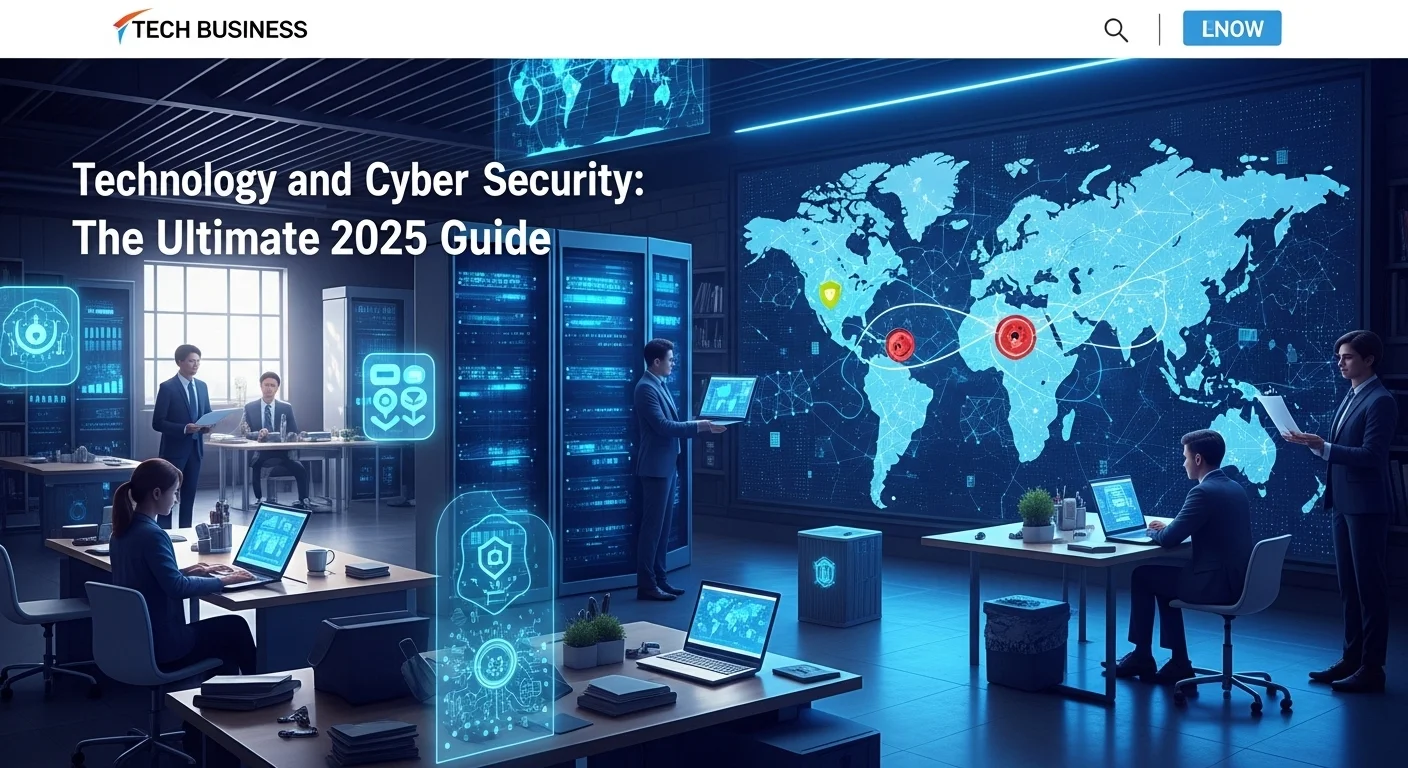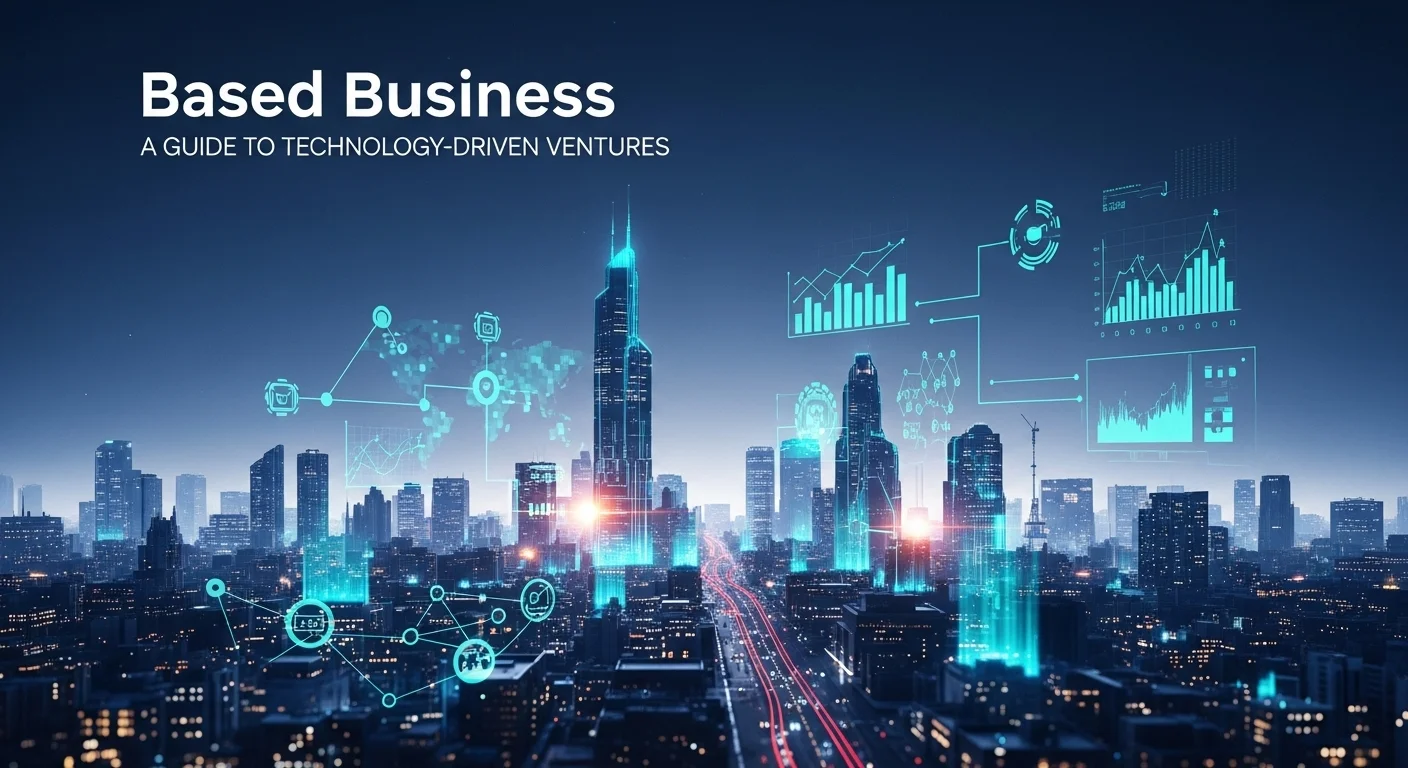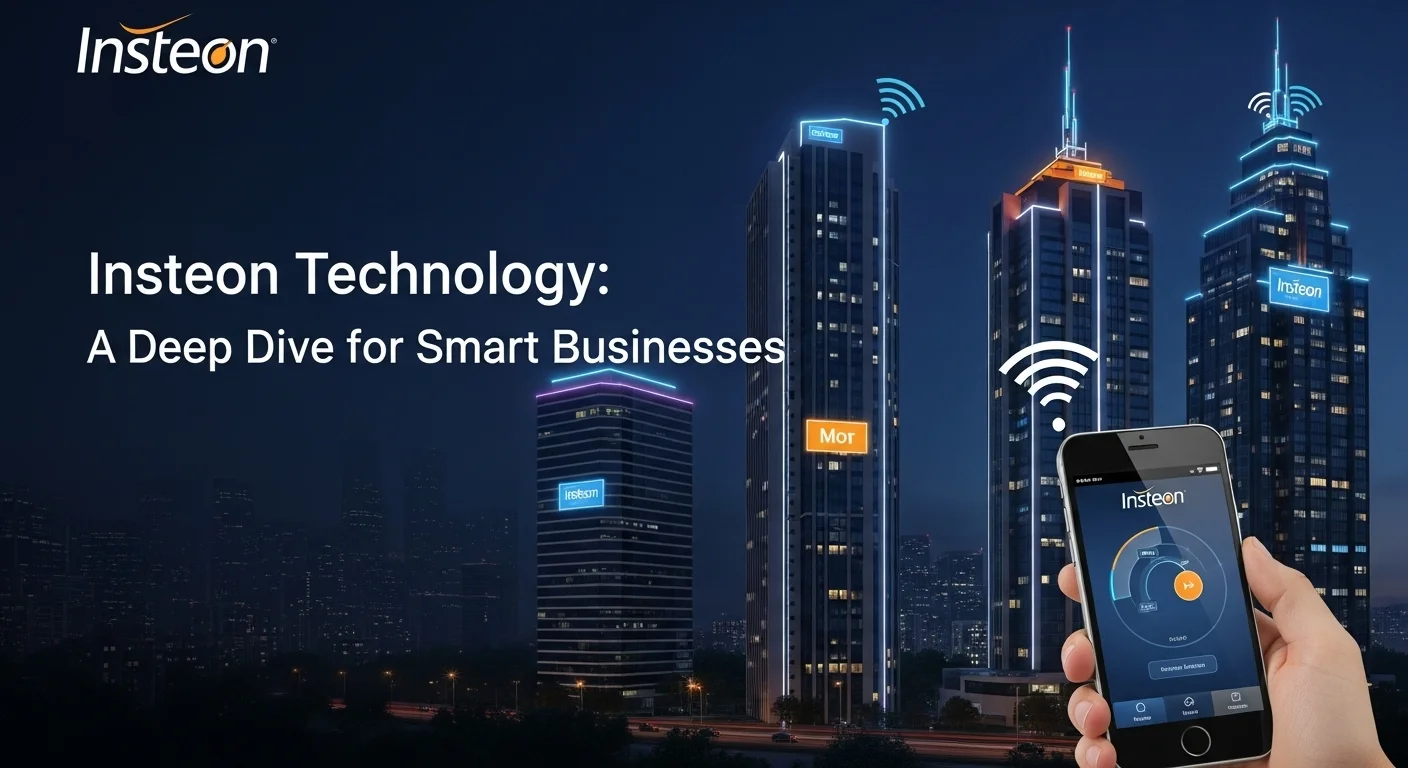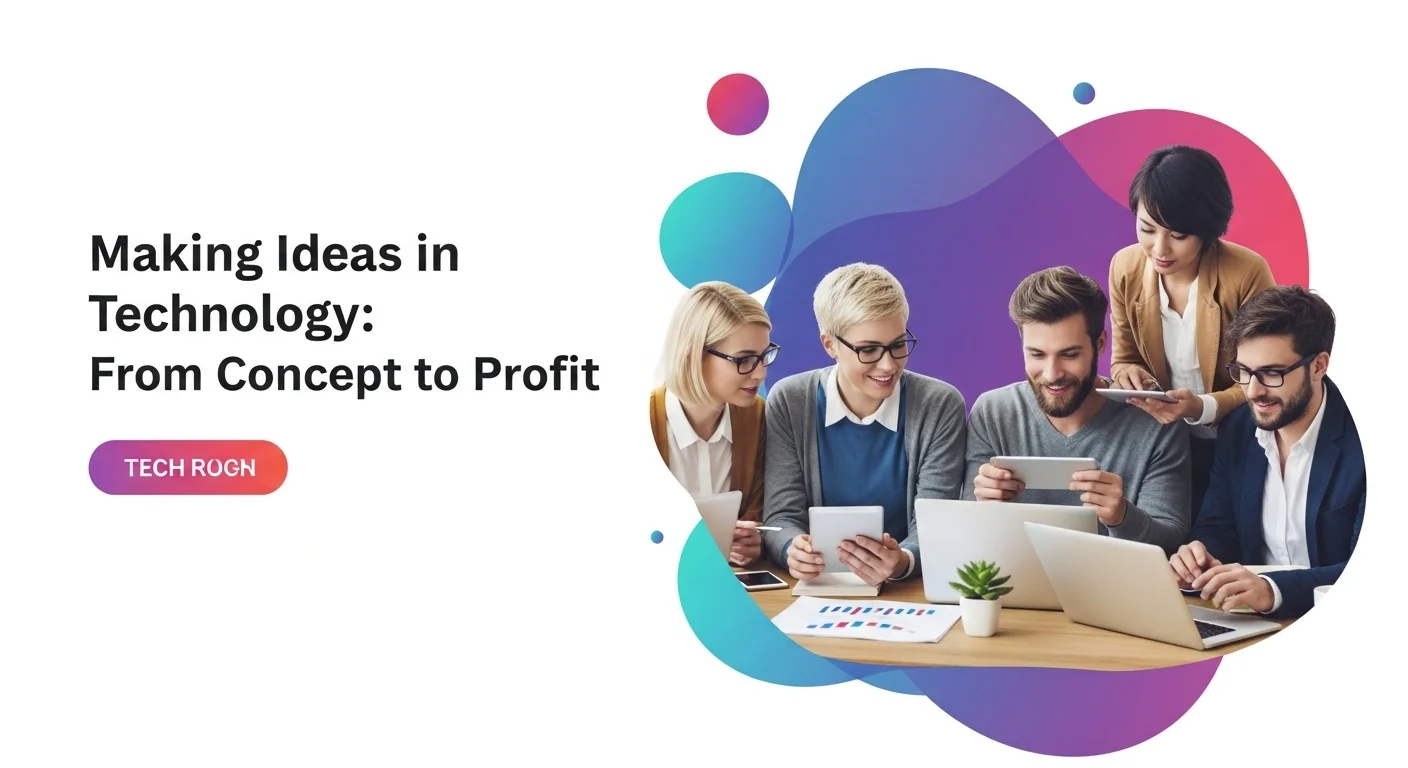Technology and Cyber Security: The Ultimate 2025 Guide

Executive Summary
In an era dominated by digital transformation, the synergy between technology and cyber security has become the bedrock of modern business and innovation. This article provides a comprehensive exploration of cyber security, detailing its fundamental importance in protecting digital assets against an ever-evolving landscape of threats. [2] We delve into the core components of a robust security posture, from foundational concepts to advanced technological solutions. Readers will gain insights into business-centric applications, including the implementation of sophisticated identity management systems and leveraging cloud security platforms. The content is designed for business leaders, IT professionals, and technology enthusiasts, offering a deep dive into technical methods, strategic best practices, and the resources available to fortify digital infrastructures. By understanding and implementing these strategies, organizations can not only defend against cybercrime, which is projected to cost the global economy trillions, but also build a resilient foundation for future growth and technological advancement. [2] This guide serves as an essential resource for navigating the complexities of the digital age securely and confidently.
Table of Contents
What is Cyber Security and why is it important in Technology?
In our increasingly interconnected world, the term 'Cyber Security' has transcended from being mere IT jargon to a critical component of our daily lives and business operations. At its core, cyber security is the practice of defending computers, servers, mobile devices, electronic systems, networks, and data from malicious attacks. [20] It's a comprehensive field dedicated to protecting the confidentiality, integrity, and availability of information, often referred to as the CIA triad. The importance of cyber security in technology cannot be overstated; as technology becomes more sophisticated and integrated into every facet of society, our vulnerability to cyber threats grows in tandem. Cyberattacks can disrupt or destroy businesses, lead to financial ruin, and compromise sensitive personal and state information. [2] The projected cost of cybercrime underscores this reality, with estimates reaching into the trillions of dollars annually, making robust cyber security not just a best practice but a matter of economic and national security. [2]
The digital landscape is a battleground where businesses, governments, and individuals are constantly under siege from a variety of threats. These can range from malware, ransomware, and phishing scams to sophisticated state-sponsored attacks. [2] The proliferation of IoT (Internet of Things) devices, cloud computing, and AI-powered systems has expanded the attack surface, creating new vulnerabilities for cybercriminals to exploit. [14] Therefore, understanding the fundamentals of cyber security is the first step toward building a resilient defense. It involves recognizing that security is not a one-time fix but a continuous process of risk management, threat assessment, and adaptation. Every employee, from the CEO to an intern, has a role to play in maintaining the organization's security posture. This collective responsibility is crucial because human error is often the weakest link in the security chain.
The Business Imperative for Strong Cyber Security
For any modern business, technology is the engine of growth and innovation. However, this reliance on technology also exposes companies to significant risks. A single data breach can lead to devastating consequences, including financial loss from theft and operational downtime, regulatory fines for non-compliance with data protection laws like GDPR or HIPAA, and long-term reputational damage that erodes customer trust. [9] This is why a strategic approach to cyber security is a business imperative. It's not just about protecting data; it's about ensuring business continuity, maintaining a competitive edge, and safeguarding shareholder value. A strong security posture is a business enabler, allowing companies to adopt new technologies and innovate with confidence. [17] Organizations that align their cyber security strategy with their business objectives are more likely to see revenue growth and increased customer satisfaction. [17]
A critical element of modern enterprise security is establishing a reliable system for professional assistance. This is where dedicated cyber security support comes into play. Whether through an in-house team of experts or a managed security service provider (MSSP), having access to 24/7 monitoring, incident response, and threat intelligence is vital. [10] These support services act as the front line of defense, actively hunting for threats, managing security tools, and responding to incidents as they occur to minimize damage. For small and medium-sized businesses (SMBs) that may lack the resources for a large internal team, MSSPs offer an affordable and effective way to access enterprise-grade security expertise and technology.
Core Pillars of Modern Cyber Security
To build an effective defense, organizations must focus on several core pillars of cyber security. One of the most critical is iam cyber security, which stands for Identity and Access Management. IAM is the framework of policies and technologies for ensuring that the right users have the appropriate access to technology resources. [3] It operates on the principle of least privilege, meaning users are only given access to the information and systems necessary for their job functions. [4] This minimizes the potential damage from a compromised account. Robust IAM solutions include features like multi-factor authentication (MFA), which adds a crucial layer of security beyond just a password, and single sign-on (SSO), which streamlines user access while maintaining centralized control. [18] Proper IAM is fundamental to preventing unauthorized access, a leading cause of data breaches.
As businesses increasingly migrate their operations to the cloud, securing these environments has become a top priority. This is where solutions like amazon cyber security become indispensable. Cloud providers like Amazon Web Services (AWS) operate on a shared responsibility model. While AWS secures the underlying infrastructure (the 'security of the cloud'), the customer is responsible for securing their data and applications within the cloud ('security in the cloud'). [50] AWS provides a vast suite of security tools and services to help customers meet this responsibility. These include AWS Identity and Access Management (IAM), AWS Shield for DDoS protection, Amazon GuardDuty for intelligent threat detection, and AWS WAF (Web Application Firewall). [49] Leveraging these tools effectively is key to building a secure and compliant cloud architecture, allowing businesses to harness the power of the cloud without exposing themselves to undue risk.
While large platforms like AWS provide foundational security building blocks, specialized providers offer advanced solutions for specific challenges. Okta cyber security is a prime example, leading the market in the Identity-as-a-Service (IDaaS) space. Okta provides a centralized platform for managing identity across thousands of applications, both in the cloud and on-premises. It simplifies the implementation of complex security policies like adaptive MFA, where authentication requirements change based on user context (like location or device), and is a cornerstone for organizations adopting a Zero Trust security model. A Zero Trust architecture assumes that no user or device is inherently trustworthy and verifies every access request. Okta's solutions help automate and enforce these principles, significantly strengthening an organization's defense against credential theft and unauthorized access.
Bridging the Talent Gap in Cyber Security
One of the most significant challenges facing the cyber security industry is a persistent and growing talent gap. There are far more open cyber security positions than there are qualified professionals to fill them. [2] This shortage puts organizations at greater risk. To address this challenge, innovative workforce development programs have emerged, and one of the most prominent is year up cyber security. Year Up is a non-profit organization that provides young adults with intensive technical and professional skills training, followed by corporate internships. [6, 24] The year up cyber security track equips students with in-demand skills in areas like network security and incident response, preparing them for successful careers in the field. [1, 32] By partnering with programs like Year Up, companies can not only find motivated and skilled talent to bolster their security teams but also contribute to creating a more diverse and equitable workforce. These initiatives are crucial for building a sustainable talent pipeline that can meet the future demands of the technology and cyber security landscape. Investing in people is just as important as investing in technology, as a well-trained and aware workforce is the ultimate line of defense.

Complete guide to Cyber Security in Technology and Business Solutions
Navigating the complex world of cyber security requires more than just a basic understanding; it demands a comprehensive strategy that integrates technology, processes, and people. This guide provides a deep dive into the technical methods and business solutions that form the backbone of a modern, resilient security posture. In an environment where cyber threats are constantly evolving, a proactive and multi-layered defense is the only way to protect critical assets and ensure business continuity. The financial and reputational stakes are higher than ever, compelling organizations to move beyond reactive measures and adopt a holistic security framework. This involves a detailed understanding of the threat landscape, the implementation of robust security controls, and the strategic use of advanced security solutions. From securing network infrastructure to protecting data in the cloud, every aspect of the IT environment must be fortified.
The foundation of a strong defense is understanding the enemy. Cyber threats come in many forms, each with its own methods and objectives. Malware, a catch-all term for malicious software, includes viruses, worms, trojans, and spyware. Ransomware, a particularly nasty form of malware, encrypts a victim's files and demands a ransom for the decryption key. Phishing attacks use deceptive emails and websites to trick individuals into revealing sensitive information, such as login credentials or credit card numbers. [20] Distributed Denial-of-Service (DDoS) attacks overwhelm a system's resources, making it unavailable to legitimate users. Understanding these and other attack vectors is crucial for developing effective countermeasures. Security frameworks like the NIST Cybersecurity Framework or ISO/IEC 27001 provide structured guidance for organizations to assess and manage their cyber security risk, offering a roadmap for building a comprehensive program.
Advanced Technical Defense Mechanisms
At a technical level, a multi-layered defense, often called 'defense in depth', is essential. This starts at the network perimeter with firewalls and intrusion detection/prevention systems (IDS/IPS). [17] Firewalls act as a barrier, controlling incoming and outgoing network traffic based on predetermined security rules. [23] IDS/IPS solutions monitor network traffic for suspicious activity and known threat patterns, blocking malicious traffic before it can reach its target. Beyond the perimeter, endpoint security is critical. Every device connected to the network—laptops, servers, smartphones—is an endpoint and a potential entry point for attackers. Advanced endpoint protection platforms (EPP) and endpoint detection and response (EDR) solutions use a combination of signature-based detection, behavioral analysis, and machine learning to identify and block threats on these devices. [40]
Data protection is another critical technical layer. Encryption is a fundamental tool that renders data unreadable to unauthorized users, both when it is stored (data at rest) and when it is being transmitted over a network (data in transit). [4] Technologies like AES-256 are the industry standard for strong encryption. [4] Data Loss Prevention (DLP) solutions take this a step further by implementing policies that prevent sensitive data from being exfiltrated from the network, whether accidentally or maliciously. These tools can identify, monitor, and block the unauthorized transfer of confidential information, providing a crucial safeguard against data breaches. Backing up data regularly is also a non-negotiable practice. In the event of a ransomware attack or system failure, having reliable backups allows an organization to restore its data and operations quickly, minimizing downtime and financial loss. [5]
Leveraging Cloud and Identity Platforms for Enhanced Security
The shift to cloud computing has revolutionized IT, but it has also introduced new security challenges. Effectively managing amazon cyber security is a prime example of how businesses must adapt. The AWS shared responsibility model dictates that customers are responsible for configuring their cloud environment securely. [50] This requires a deep understanding of AWS security services. A core component is iam cyber security, specifically AWS IAM, which allows for granular control over who can access which AWS resources. [49] Best practices include enforcing MFA for all users, applying the principle of least privilege to IAM policies, and regularly auditing permissions. For threat detection, Amazon GuardDuty continuously monitors for malicious activity and unauthorized behavior using machine learning and anomaly detection. [43] AWS WAF helps protect web applications from common exploits like SQL injection and cross-site scripting, while AWS Shield provides robust protection against DDoS attacks. [47] Properly architecting a solution using these services creates a secure foundation for applications and data in the cloud.
To manage identities at scale, especially in complex, hybrid environments, many businesses turn to specialized platforms. Okta cyber security solutions provide a powerful, centralized control plane for identity. As a leader in the IDaaS market, Okta integrates with thousands of applications, enabling seamless and secure access for users through Single Sign-On (SSO). [18] Its real strength lies in its advanced security features, particularly Adaptive Multi-Factor Authentication (MFA). Okta can assess the risk of each login attempt based on factors like the user's location, device, and network, and step up authentication requirements accordingly. For instance, a login from an unrecognized device might trigger a request for a biometric scan or a security key, while a login from a trusted office location might proceed with just a password. This adaptive approach provides a better user experience without compromising security and is a key enabler of a Zero Trust security posture, which is rapidly becoming the industry standard.
Building a Resilient Security Operation
Technology alone is not enough. A successful cyber security program requires a robust operational framework and skilled personnel. This is where the role of cyber security support becomes central. A Security Operations Center (SOC), whether in-house or outsourced, serves as the command center for an organization's security efforts. [22] SOC analysts are responsible for 24/7 monitoring of security alerts, triaging potential incidents, and initiating the response process. [10] They use tools like Security Information and Event Management (SIEM) systems to aggregate and correlate log data from across the IT environment, helping to identify patterns that may indicate an attack. Threat hunting is another key function, where analysts proactively search for threats that may have evaded automated defenses. Having a well-defined incident response plan is also critical, outlining the steps to be taken in the event of a breach to contain the threat, eradicate it, and recover normal operations as quickly as possible.
The persistent shortage of skilled professionals makes building and retaining a SOC team challenging. This is why initiatives like the year up cyber security program are so valuable. These programs create a pipeline of trained and motivated individuals ready to step into entry-level security roles, such as SOC analyst or incident response coordinator. [1, 32] For businesses, partnering with year up cyber security can be a strategic move to fill critical roles, bring fresh perspectives to the team, and invest in the next generation of defenders. [6, 25] By combining advanced technology platforms like AWS and Okta with skilled human oversight and robust operational processes, organizations can build a truly resilient cyber security program capable of defending against the sophisticated threats of the modern digital landscape.

Tips and strategies for Cyber Security to improve your Technology experience
In the final analysis, cyber security is not merely a technological defense mechanism but a strategic imperative that enhances the overall technology experience for businesses and individuals alike. A secure environment fosters trust, encourages innovation, and enables the seamless use of digital tools. This section provides practical tips, actionable strategies, and best practices to fortify your digital presence. The goal is to move from a reactive, compliance-driven mindset to a proactive culture of security awareness. By embedding security into the fabric of your operations, you can mitigate risks more effectively and unlock the full potential of your technology investments. The strategies discussed here are designed to be applicable across various organizational sizes and industries, focusing on creating a sustainable and adaptive security posture.
The cornerstone of any effective cyber security strategy is people. Technology can be bypassed, and policies can be ignored, but a well-trained and vigilant workforce can be your most effective defense. Employee training should be an ongoing process, not a one-time event. Regular training sessions should cover topics like identifying phishing emails, practicing good password hygiene, and understanding the company's security policies. [37] Phishing simulations are an excellent way to test and reinforce this training in a safe environment. By sending out mock phishing emails, you can see which employees are susceptible and provide them with targeted follow-up education. Creating a culture where employees feel comfortable reporting potential security incidents without fear of blame is also crucial. An open line of communication with the IT or security team can lead to the early detection of threats that might otherwise go unnoticed.
Best Practices for a Strong Security Posture
Implementing a set of universally recognized best practices is fundamental to improving your security. One of the most impactful is enforcing strong password policies and, more importantly, mandating the use of Multi-Factor Authentication (MFA). [5, 11] MFA adds a second layer of verification, such as a code from a mobile app or a fingerprint scan, making it significantly harder for attackers to gain access even if they steal a password. [12] Another critical practice is to keep all software and systems up to date. Software updates frequently contain patches for security vulnerabilities that have been discovered. [8] Automating patch management ensures that these critical updates are applied promptly, closing the window of opportunity for attackers to exploit known flaws. [5]
Controlling access to sensitive information is another key strategy. This is where the principle of least privilege, a core tenet of iam cyber security, comes into play. [4] Employees should only be granted the minimum level of access necessary to perform their job duties. This can be implemented through Role-Based Access Control (RBAC), where permissions are assigned based on job roles rather than to individuals. [4] Regularly reviewing and auditing these permissions is essential to ensure that access levels remain appropriate and that former employees' access has been revoked. These access control strategies drastically reduce the potential impact of a compromised account, as the attacker's movement within the network will be severely limited.
Leveraging Technology for a Secure Business Environment
Modern technology offers powerful tools to enhance your security. For businesses operating in the cloud, fully utilizing the features of your provider is a must. With amazon cyber security, this means going beyond the basics. For example, use Amazon Macie to discover and protect sensitive data stored in Amazon S3, and leverage AWS Security Hub to get a comprehensive view of your security alerts and compliance status across your AWS accounts. [49] Automating security checks and responses using services like AWS Lambda can further harden your environment. For instance, you could create a Lambda function that automatically revokes public access to an S3 bucket the moment it's detected, providing real-time remediation.
For identity management, platforms like Okta offer advanced capabilities that can significantly improve security and user experience. Implementing okta cyber security features like adaptive policies and passwordless authentication can create a more secure and frictionless environment. Passwordless authentication, using methods like biometrics or security keys, eliminates the risk of password-based attacks altogether. Okta's extensive integration network also allows businesses to enforce consistent security policies across all their applications, whether they are in the cloud or on-premises. This centralized control is invaluable for maintaining visibility and enforcing security standards across a sprawling digital ecosystem.
The Importance of Support and Future-Proofing
No organization can handle every security challenge alone. Establishing a relationship with a reliable cyber security support provider is a smart investment. [10] These services can range from managed detection and response (MDR), where a team of experts monitors your network 24/7 for threats, to vCISO (virtual Chief Information Security Officer) services, which provide strategic security leadership on a fractional basis. [21] A good support partner brings specialized expertise, advanced tools, and the ability to scale resources as needed, allowing your internal team to focus on core business objectives. When choosing a provider, look for a proven track record, deep technical expertise, and a clear understanding of your business needs and regulatory requirements.
Finally, future-proofing your security strategy means staying informed and being adaptable. The threat landscape is not static; new technologies like AI and quantum computing will introduce new opportunities and new risks. To stay ahead, it is crucial to invest in continuous learning and talent development. Supporting programs like the year up cyber security initiative is one way to contribute to a healthy talent ecosystem while also finding skilled individuals for your team. [1, 6] These programs are designed to equip young adults with the practical skills needed to succeed in the ever-evolving field of cyber security. [24, 25] By embracing best practices, leveraging advanced technology, seeking expert support, and investing in people, businesses can create a robust and resilient security posture that not only protects them today but also prepares them for the technological challenges of tomorrow.
Expert Reviews & Testimonials
Sarah Johnson, Business Owner ⭐⭐⭐
The information about Cyber Security is correct but I think they could add more practical examples for business owners like us.
Mike Chen, IT Consultant ⭐⭐⭐⭐
Useful article about Cyber Security. It helped me better understand the topic, although some concepts could be explained more simply.
Emma Davis, Tech Expert ⭐⭐⭐⭐⭐
Excellent article! Very comprehensive on Cyber Security. It helped me a lot for my specialization and I understood everything perfectly.



